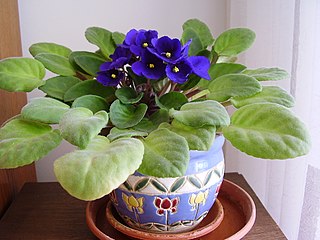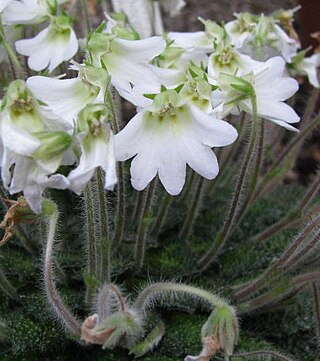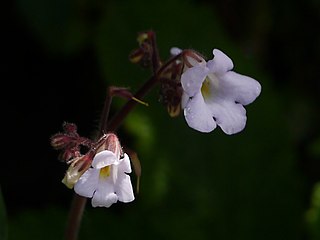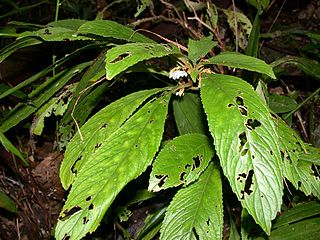
Gentiana is a genus of flowering plants belonging to the gentian family (Gentianaceae), the tribe Gentianeae, and the monophyletic subtribe Gentianinae. With over 300 species, it is considered a large genus. Gentians are notable for their mostly large trumpet-shaped flowers, which are often of an intense blue hue.

Dracocephalum is a genus of flowering plants in the family Lamiaceae, native to temperate regions of the Northern Hemisphere. These flowers, collectively called dragonhead, are annual or perennial herbaceous plants or subshrubs, growing to 15 to 90 centimeters tall. The genus has 89 species as currently circumscribed, which includes the formerly separate genera Hyssopus, Lallemantia, and others. Older circumscriptions include 60 to 70 species.

Aralia, or spikenard, is a genus of the family Araliaceae, consisting of 68 accepted species of deciduous or evergreen trees, shrubs, and rhizomatous herbaceous perennials. The genus is native to Asia and the Americas, with most species occurring in mountain woodlands. Aralia plants vary in size, with some herbaceous species only reaching 50 centimetres (20 in) tall, while some are trees growing to 20 metres (66 ft) tall.

Gesneriaceae, the gesneriad family, is a family of flowering plants consisting of about 152 genera and ca. 3,540 species in the tropics and subtropics of the Old World and the New World, with a very small number extending to temperate areas. Many species have colorful and showy flowers and are cultivated as ornamental plants.

Aeschynanthus is a genus of about 150 species of evergreen subtropical and tropical plants in the family Gesneriaceae. They are usually trailing epiphytes with brightly colored flowers that are pollinated by sunbirds. The genus name comes from a contraction of aischuno and anthos (flower). The common name for some species is lipstick plant, which comes from the appearance of the developing buds emerging from the calyces. A full list of the accepted species and their synonyms can be found in the Smithsonian Institution's World Checklist of Gesneriaceae.

Anaphalis is a genus of herbaceous and woody flowering plants within the family Asteraceae, whose members are commonly known by the name pearl or pearly everlasting. There are around 110 species with the vast majority being native to central and southern Asia. There is one species native to North America that is fairly well known and popular in cultivation, namely the western pearly everlasting.

Brassaiopsis is a genus of shrubs in the family Araliaceae. There are about 45 species, distributed in Asia from the Himalaya through China, Vietnam, Thailand to Indonesia.

Petrocosmea is a genus of the family Gesneriaceae, the African violet family. Many of the species within this genus are endemic to high-elevation areas in Western China, although some are native to other parts of Asia. including north-central and southern China, Indochina, and the eastern Himalayas. It is a rosette-forming genus that generally grows on wet mossy rocks or forests.

Cremanthodium is a large genus of flowering plants in the daisy family.
Briggsia was a genus in the family Gesneriacae that consisted of 22 species of herbaceous perennials, native to the Himalayas, China and Vietnam. The genus is no longer recognized, with all of its member species having been relocated to other genera, including Glabrella, Loxostigma, and Oreocharis.

Primulina is a genus of flowering plants in the African violet family Gesneriaceae. In 2011 the genus was expanded with the transfer of many species that had previously been placed in the genus Chirita. In 2016, five species were moved to the genus Deinostigma.

Henckelia is a genus of flowering plants in the family Gesneriaceae. Many of its species were formerly placed in Didymocarpus sect. Orthoboea and in the genus Chirita. Many species formerly placed in Henckelia have been moved to Codonoboea and Loxocarpus.

Didymocarpus is a genus of flowering plants in the family Gesneriaceae and typical of the tribe Didymocarpeae. There are about 100 known species distributed in India, Nepal, Bhutan, Myanmar, southern China, Vietnam, Laos, Cambodia, Thailand, and the Malay Peninsula, with one species extending up to northern Sumatra. Some members of the genus are known for their medicinal properties, especially to cure diseases related to the kidneys.

Rhynchotechum is a genus of plants in the family Gesneriaceae, subfamily Didymocarpoideae. Species distribution records are mostly from India, Sri Lanka, China through to southern Japan, Indo-China and Malesia through to New Guinea.

Hemiboea is a genus of flowering plants belonging to the family Gesneriaceae.
Loxostigma is a genus of flowering plants belonging to the family Gesneriaceae.
Maharanga is a genus of flowering plants belonging to the family Boraginaceae.

Oreocharis is a genus of flowering plants in the family Gesneriaceae. It includes 154 species native to Asia, which range from the Eastern Himalayas and Tibet through Indochina and China to Japan.















